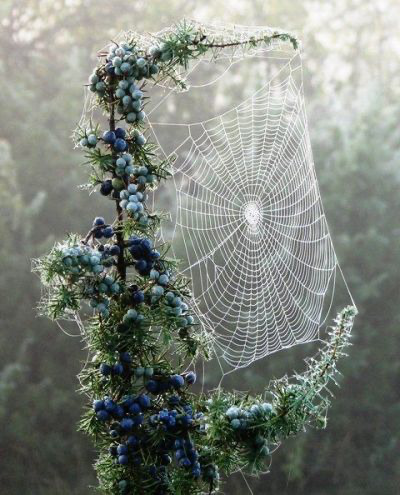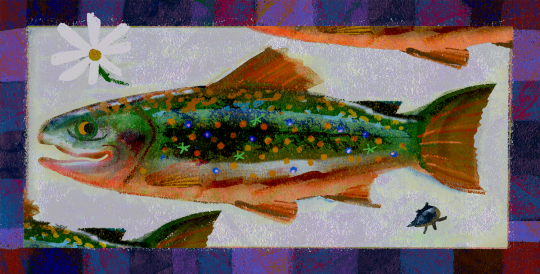Text
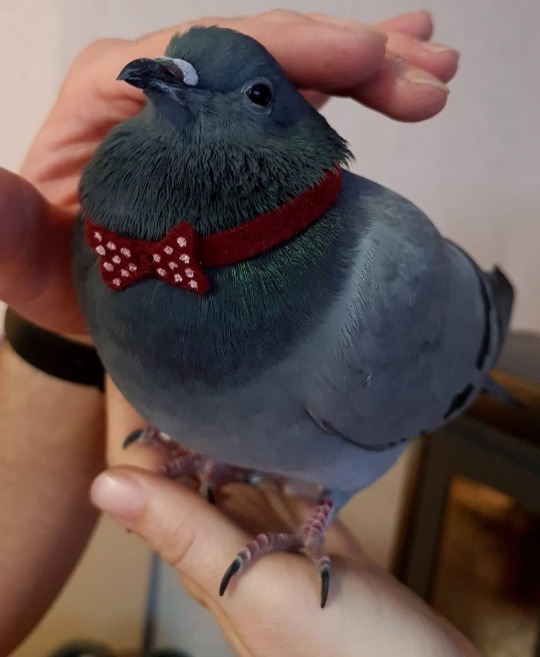
This is the cutest fucking thing I’ve ever seen in my life
12K notes
·
View notes
Text
i feel so bad for non-argentinians like what do you mean you're missing out on the best news channel, crónica tv

("spongebob was found drunk in public")
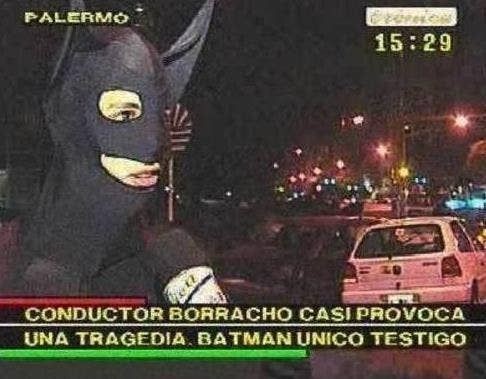
("drunk driver almost caused a tragedy. batman as the only witness.)

("claims that he was discriminated against for being handsome")
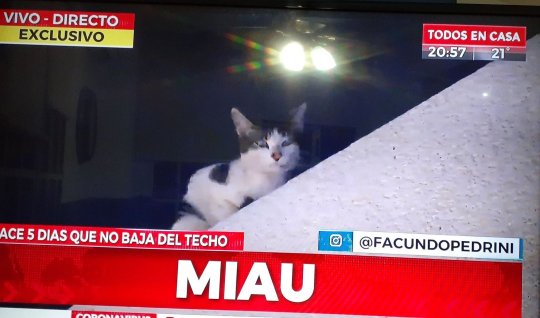
("meow")

("manchita broke the quarantine and can't get down")
7K notes
·
View notes
Text

Young John of Patmos, Coño Codex, 14th century.
The saint is depicted here with his favorite sandwich order. (Footing grinder with extra tomatoes, provolone, sliced figs, and balsamic dressing.) This sandwich was known to church fathers as "The Patmos."
491 notes
·
View notes
Text

i absolutale love medieval representations of hell cause they're so explicit and like, you gotta remember people saw this and took this for absolute reality, no discussion, this was a thing that was going to happen if they didn't behave, but let me just point out to the very far left a knight falling on his head representing pride, and knights were often the symbol of pride cause they were fuckers with expensive armour who behaved like shitheads and I just find this so funny
8 notes
·
View notes
Text
A combination of barrier mesh animation and anamorphic projection on elegant porcelain.
55K notes
·
View notes
Text
ON BASQUE AND ITS TIES WITH GEORGIAN, ARMENIAN, AND TAMAZIGHT.
American linguist Morris Swadesh (1909-1967) created a world map of current languages according to comparative linguistics, taking into account their common origin. The lexico-statistical or glottochronological Swadesh method is based on taking 215 words in two groups of 100; key words such as personal pronouns, low numerals, parts of the body, kinship names, some action verbs, some adverbs of time and place, objects of nature, very common actions, bodily actions and questions.
Swadesh claimed that in the basic vocabulary the rate of change is so regular in languages, that he had been able to create a system of measuring the elapsed time in which two languages were related in the past and that today are separated geographically.
According to Swadesh, that basic vocabulary of 100 or 215 words changes less than 20% per millennium in each language. These variations in vocabulary leave a common ground between two or more languages related to each other, which is measured chronologically, thus establishing the time distance between a language and its more modern relatives. If the number of words with the same root between two languages in these two groups of 100 is less than or equal to 5%, it is considered a similarity by chance (the figure does not respond to anything specific, the method has many random parts), and if it is greater it would be the result of some common past.
There is a formula to know the time elapsed between the period in which the contact occurred and the current moment, and the result with Basque was the following (with the rest of the languages with which Basque has been compared by this method the result is inferior and not significant):
list 215 list 100
Northwest Circassian Caucasian:
6.62% 7.52%
Northwest Avar Caucasian:
3.80% 5.37%
Georgian, South Caucasian:
4.73% 7.52%
Rift Tamazight (northern Morocco):
6% 9.67%
Southern Tamazight (southern Morocco)
7.38% 10.86%
Many of the similarities considered good are more than questionable, since the evolution of words and languages is not taken into account, some borrowings from other languages are considered good, etc.
Nor can we forget American linguist R.L. Trask, that compared Hungarian and Basque and found in 2 hours of searching 65 similar words that could only be the result of chance, but that lead to question many investigations: this exercise tested by other researchers with other unrelated languages has given the same surprising result. R.L. Trask said “I can't understand why some linguists get so excited when they find two dozen Basque words that look like two dozen other Berber or Sumerian words.”
Basque and the languages of the Caucasus
The Caucasus is located 4,000 kilometers from Garonne-Pyrénées-Ebro where the Basques live. In the Caucasus, about 50 different peoples coexist with almost 22 languages. The main difficulty in establishing the Basque-Caucasian relationship consists of this lack of unity.
Swadesh's lexico-statistical ratio of Circassian and Georgian to Basque is 7.52%, higher than any other language in the world. The supposed contact would have occurred in the Magdalenian, about 10,000 years ago. With the rest of the languages of the Caucasus, current Basque is similar in typology (verbs, the ergative, etc.) and in the etymology of some words, but its lexical-statistical relationship with all of them is less than 5%.
There are also parallels between Basque and Georgian in syntactic aspects, such as the use of the ergative (transitive-intransitive verbs, “Nor-Nork” forms) that do not occur in any other European language, the reflexive way of making sentences such as: “I have seen my head in the mirror” (nire burua ispiluan ikusi dut), and not: “I have seen myself in the mirror”, the use of base twenty to count, etc.
But many current or recent renowned linguists are skeptical about the relationship with the Caucasian languages. Basque linguist Koldo Mitxelena (1915-1987) said that: “In summary, there are some Basque-Caucasian lexical similarities that cannot be demonstrated to be possible, but on the other hand there are a large number whose extraordinary implausibility can be demonstrated (…). Even if Basque and the Caucasian languages go back to a common origin, the number of missing intermediate links must be so high that it is to be feared that, due to not knowing them, the ancient ties of kinship will not be established."
If there is a relationship, for both Koldo Mitxelena and Xabier Kintana, it has to go back to the fifth and sixth millennia or earlier.
Basque and Armenian
Armenian linguist and Basque philologist Vahan Sarkisian, creator of the Basque-Armenian Dictionary and a Grammar of the Basque Language in his language, is the main promoter of the "Basque-Armenian theory" and the one who has done the most work in recent years on ethnolinguistic kinship between both peoples.
This prestigious Armenian linguist affirms that "the best promoters of this theory were neither Basques nor Armenians and, therefore, they had no direct interests in the issue. I am referring to the Englishman Edward Spencer Dodgson and the German Joseph Karst. The former knew well Basque. In Paris he began to study Armenian and quickly detected the similarities, which he initially summarized in a list of 50 words. Karst was an Armenianologist and, when he came into contact with Basque, he compared issues related to anthropology, the phonetic system, the grammar and the lexicon and extracted more than 400 similarities. (...) We understand without problems, for example, what Zabaltegi, or Ormazabal means, because it means exactly the same in Armenian. We feel at home, and that already means something. Armenian is considered an Indo-European language (Basque is the only pre-Indo-European language in all of Europe, prior to the invasions of these peoples), but if we bring to light the twenty most important regularities of the language we will see that they coincide more with Basque than with any other neighboring languages such as Georgian or Persian. And not only referring to the lexicon. In Armenian, for example, words are not formed with an initial -r, our throat has a hard time pronouncing it. The same thing happens to the Basque language, to the Basque throat.
Neither Armenian nor Basque recognize the accumulation of consonants, they are unpronounceable to us, while in other languages neighboring ours, such as Georgian, groups of up to five or six consonants are common. We could mention many other characteristics that separate us from our neighbors and bring us closer to Basque, such as the postponed article, the way of forming the plural, not to mention toponymy, which provides an enormous amount of similarities. (…) I believe that this type of coincidences - which even affect the articulation apparatus, which has a physiological nature - cannot arise from mere contact, they cannot be imported or exported. Karst said that Armenian and Basque are two varieties of the same linguistic stem (…) The only thing I would dare to say with any certainty is that perhaps in ancient times the entire area was occupied by the same ethnic-cultural element, which gave way terrain to other elements, leaving vestiges in Euskadi and Armenia, as survivors of a great and ancient civilization.”
It is curious that Armenian – which does not give any relationship with Basque through the Swadesh method – and Georgian are, apparently, more similar to Basque than to each other when they are neighboring peoples. To conclude this short summary, let's share a toponymic curiosity: in Georgia there is Mount Gorbeya (like the highest mountain in Bizkaia and Alaba), in Armenia is the sacred Mount Ararat (like the Aralar mountain range between Alaba, Gipuzkoa and Alta Navarra), and also a mountain named Gora (mountain in the language of the area and "up" in Basque). The curiosity is even greater because the Araxes River bathes Mount Aralar, and in the Armenian Mount Ararat there is a river called... Araxes.
Basque and Tamazight
Tamazight, by the Swadesh method, is not related to Arabic or Egyptian; nor with Georgian, but with Basque, as well as the Cadmitosemitic languages from which it comes. Therefore, Basque is a language that may have common elements with Georgian and Berber, but they do not have any with each other.
The percentage of lexical-statistical relationship of Swadesh of Basque with Southern Tamazight is 7.38% and with Rift Tamazight is 6% (taking the 215 words because with 100 the percentage increases). Therefore, by this method there would be a relationship or common substrate between both languages. Based on the percentage relationship, contact would have taken place about 8,000-9,000 years ago.
In Berber the names given to animals are very similar to those given in Basque. «Aker» & «iker» (billygoat), «asto» & «ezet» (donkey); They also coincide in the way of saying horse, crow, river, brother, lie, name ("Izen" and "isem"), "I" and others.
Within this analysis we must mention the Guanches, native inhabitants of the Canary Islands before the arrival of the Spaniards. From the writings found (archaeology confirms this) it is believed that the Guanches would speak a Tamazight language that, due to the isolation of the islands, would maintain a greater degree of relationship with Basque. There are those who even see Basque place names in the Canary Islands such as: Los Llanos de Aridane (Harrigane: stone peak), Argindei, Tinizara (Tinitzaha), Tajuia, Tenegia, Jedei (Iedegi) in La Palma and in Lanzarote: Masdeche (Mahats- etxe: grape-house), Haria, Orzola, Guinate (Gainate: high step), Yaiza (haitza: rock), Ajache, Tesegite, Mozaza etc.
An anecdote that is often told is that the first conquerors of the Canary Islands believed that the natives spoke Basque.
Between Basque and Tamazight the similarities are reduced to the lexical or lexicographic level, since syntactically and grammatically there does not seem to be any relationship, both in current speech and in the past; there are just similarities in verbal articulation or in the use of some particles.
Julio Caro Baroja said in this regard: “I must warn in any case that the relationship between Basque and the African languages called Hamitic is not as founded as claimed. On the contrary, the hypothesis of a relationship between Basque and the Caucasian languages, which is perhaps the one that has produced the least interest in the Peninsula, seems to be the most prudent, because it is based on linguistic, morphological and strict observations.
Koldo Mitxelena had the same opinion, and believed it was necessary to study more the relationship between Basque and the Caucasian languages which, unlike the supposed kinship with Tamazight, did cause serious doubts.
[x]
@knario47
91 notes
·
View notes
Text

Mauro C. Martinez (American, 1986) - Trust (2022)
67K notes
·
View notes
Text
Adventures in Plant Dyeing: Part 4 - Coreopsis
This year I decided I wanted to grow some of my own plant dyes, and after some careful research and consideration I settled on dyer's coreopsis, a pretty yellow flower that produces warm yellows and oranges.

I planted around 15 of them around easter and in late July they started to bloom. I decided to collect the blooms every couple of days and dry them out until I had enough to dye with. I discovered that a 1:2 ratio of dried flowers to fibre was needed, so I kept drying and collecting my flowers until I had roughly 35g of dried flowers. I selected a small 25g skein of wool and 50g of yarn that I had hand spun earlier this year. The 25g skein was going to be modified with an iron afterbath, as I had done before.
Firstly I mordanted my yarn with alum, then I simmered the dried flowers in the dye pot for about an hour. I left them to cool before straining it. The dye bath was now a rich brown, which looked promising.

Then I added the mordanted yarn to the dye bath and left it on low heat for about an hour, before leaving it to cool and rinsing them out.
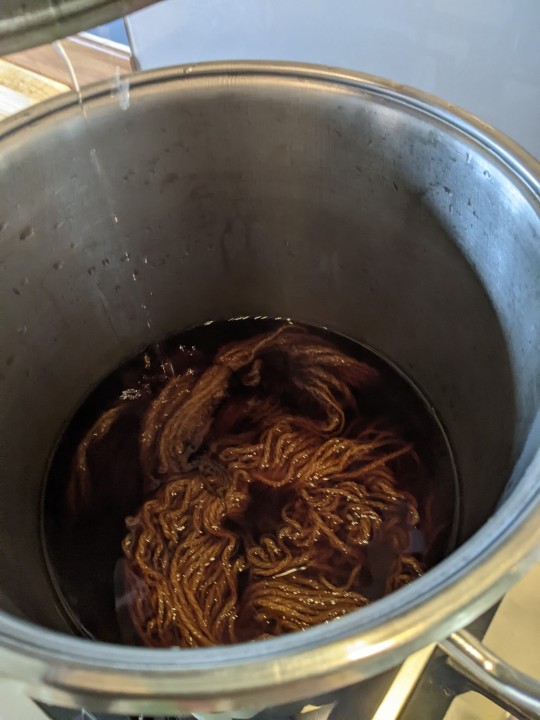
Weirdly enough, instead of a warm yellow or orange, both yarns were a sort of yellowy-green. This is the colour they were meant to be after using an iron modifier, which is odd. Nevertheless I decided to carry out my original plan anyway, and prepared an iron afterbath for the smaller of the yarns. After 15 minutes, it had turned a lovely dark olive green. I was very confused, however I loved the colours so it didn't really matter. Here's my results compared with what I was expecting to get from it:
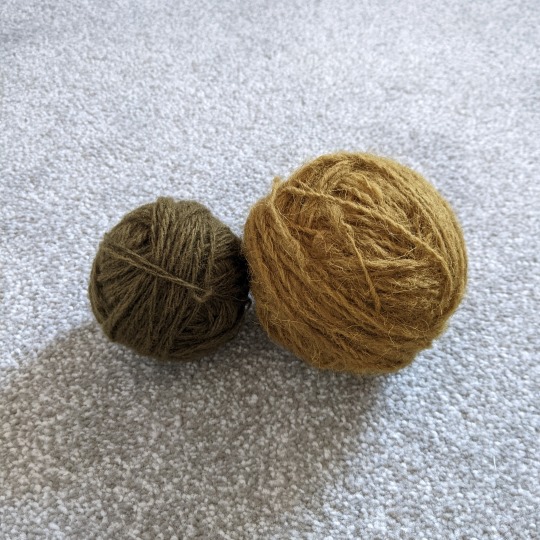

This will be my last adventure into plant dyeing for the season, as I am due to start uni very soon. I already have a few plans for next summer, though!
76 notes
·
View notes
Text
finally home to use my orb

fucking hell this happens every time i try to use my orb
4K notes
·
View notes
